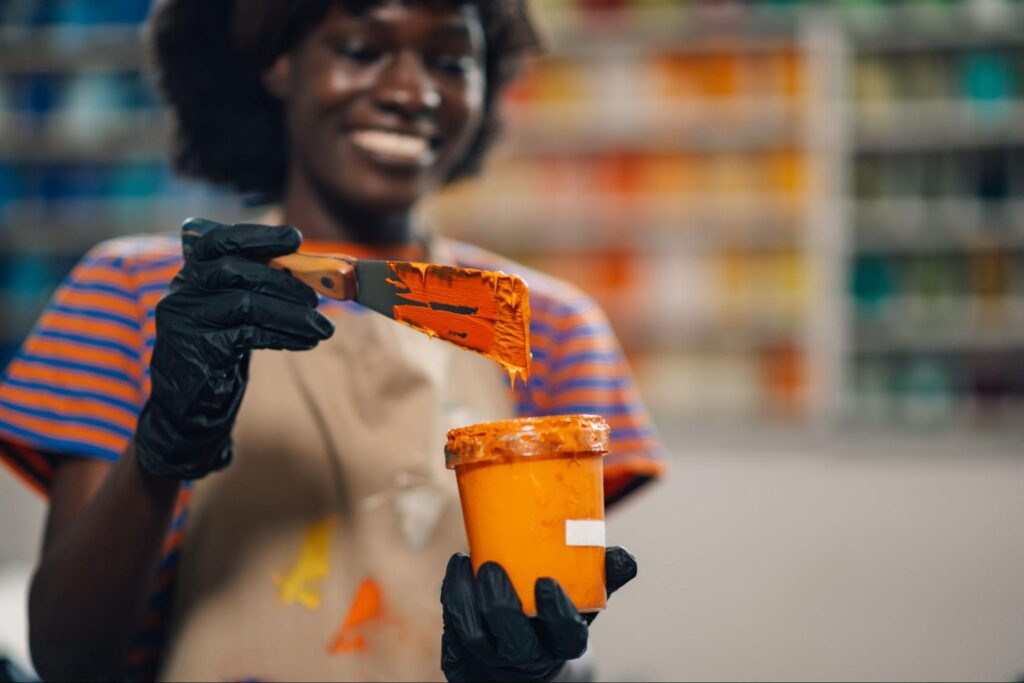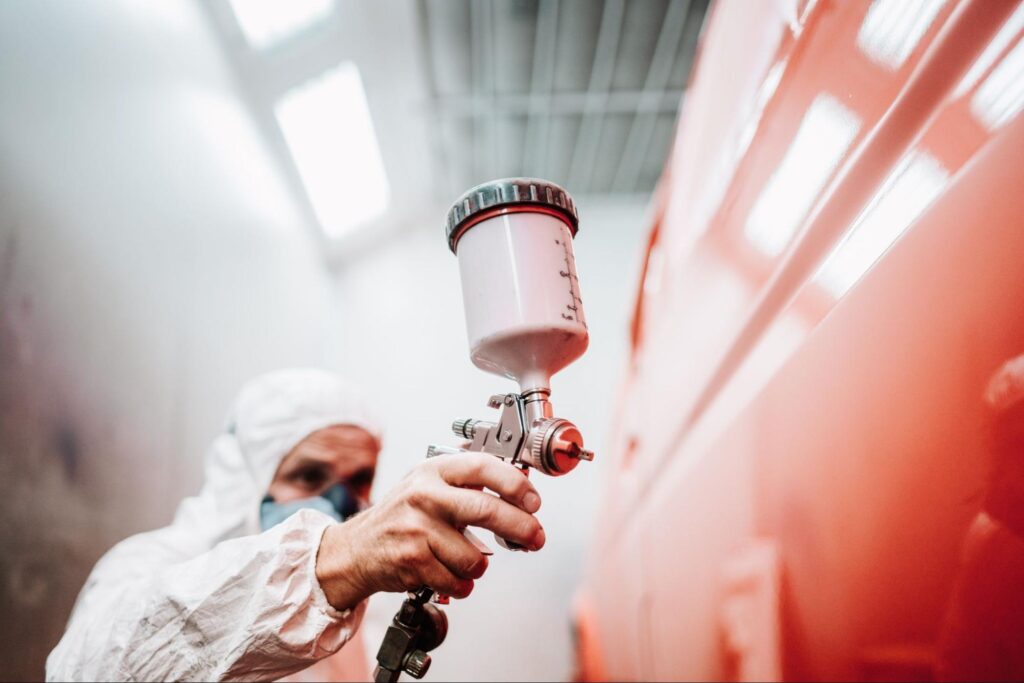
Industrial painting plays a crucial role in protecting structures, equipment, and surfaces from environmental damage, wear, and corrosion. Whether applied to warehouses, manufacturing facilities, machinery, or infrastructure, industrial painting is more than just a cosmetic upgrade—it’s a specialized process that ensures long-term durability, safety, and compliance. For businesses planning an industrial painting project, understanding what the process entails from start to finish helps set clear expectations and ensures the project runs smoothly.
Initial Steps in Industrial Painting
Every successful industrial painting project begins with a thorough consultation and on-site assessment, which lays the groundwork for the entire process. During this initial phase, painting contractors examine the current condition of the surfaces, evaluate environmental exposure, and assess factors like substrate type, coating history, access limitations, and operational demands. These insights help identify potential challenges and determine the best approach for surface preparation, coating systems, and safety protocols. By collecting accurate data upfront, painting professionals can develop a tailored plan that includes material recommendations, work schedules, and clear budget expectations—all while aligning with safety regulations, especially in heavily monitored or high-risk industrial environments.
Industrial Painting Project Planning and Surface Testing
Effective industrial painting begins with thorough planning and precise surface testing. This phase ensures that the selected materials and methods are suitable for the site’s conditions and that any potential hidden issues are addressed before the application begins.
Coating Selection
Industrial projects often require specialized coatings, such as epoxy, polyurethane, or zinc primers, depending on environmental exposure, chemical resistance, or the need for corrosion protection. Selecting the wrong coating can lead to premature failure, costly repairs, or non-compliance with industry standards.
Environmental and Material Assessment
Temperature, humidity, and surface material all influence which paint systems are viable and how well they will perform. Understanding these variables in advance helps avoid adhesion issues, curing delays, or compromised durability.
Testing for Contaminants
Surfaces are tested for oil, grease, salts, and existing coating failures using techniques such as pH tests, moisture meters, or adhesion pull tests. This testing ensures that surface preparation is adjusted to remove any elements that could interfere with coating performance.
Developing an Industrial Painting Project Plan
Once site conditions are assessed and technical data is collected, the next step in the industrial painting process is to develop a detailed job scope that outlines the coating system, surface preparation methods, work areas, and required safety protocols. A clear project timeline is then established, taking into account job size, curing and drying times, and environmental factors such as weather or ventilation. Because many facilities remain operational during painting, schedules are often adjusted to accommodate off-hours or phased work to minimize disruptions. Contingency plans are also built in to address unexpected delays, ensuring the project stays on track from beginning to end.
Industrial Painting Safety Setup and Job Site Preparation
Before industrial painting can begin, the job site must be carefully prepared to ensure safety, efficiency, and regulatory compliance. This preparation involves removing unnecessary equipment, setting up scaffolding or lifts for elevated access, and installing containment systems to control dust and overspray. In enclosed or confined areas, proper ventilation is established—especially when working with coatings that emit volatile organic compounds (VOCs). Safety barriers, warning signs, and designated work zones are implemented to protect personnel and the surrounding environment, all while meeting strict OSHA and environmental standards.
Preparing Surfaces for Industrial Painting
Surface preparation is the most critical step in the industrial painting process. Even the most advanced coatings will fail if applied to a poorly prepared surface. Depending on the material and condition, preparation may include:
Abrasive Blasting
Abrasive blasting removes rust, mill scale, and old paint while creating a textured surface that enhances coating adhesion. It’s ideal for metal substrates and requires strict containment to manage dust and debris.
Pressure Washing
Pressure washing eliminates grime, mold, and loose debris quickly and efficiently, especially from large surface areas. It’s often used as an initial cleaning step before more aggressive preparation methods.
Chemical Cleaning or Solvent Wiping
This method dissolves oils and grease that interfere with coating performance, especially on machinery or industrial surfaces. Proper chemical use and waste disposal are crucial for complying with safety and environmental regulations.
Mechanical Grinding or Sanding
Mechanical grinding or sanding smooths imperfections and helps create a surface profile for better adhesion. It’s beneficial for spot treatments and areas where blasting isn’t feasible.
Preparing for Topcoats in Industrial Painting
Priming serves as the essential link between surface preparation and the application of topcoats in the industrial painting process. Industrial-grade primers are formulated to enhance adhesion, prevent corrosion, and establish a durable foundation for the coating system. The choice of primer depends on both the substrate and environmental conditions—zinc-rich primers, for instance, offer cathodic protection for steel. At the same time, moisture-tolerant epoxies are ideal for damp or humid settings. Primers are most often applied using spray equipment for even coverage, though brushing or rolling may be used in tight or detailed areas. Regardless of the method, allowing proper drying and curing time is critical before proceeding to the next layer.
Enhancing Protection With Industrial Painting
Intermediate coats are often necessary in industrial painting systems to build up film thickness, reinforce protection, and create a durable buffer between the primer and final topcoat. These additional layers are particularly valuable in high-traffic or high-impact environments where a single topcoat alone wouldn’t offer adequate durability. During this phase, special finishes may also be applied, such as non-slip textures for safety, UV-resistant gloss coatings for sun-exposed surfaces, or anti-graffiti barriers for public-facing structures. In some cases, projects may call for color-coded zones, directional markings, or custom stenciling to meet safety protocols and operational requirements.

Inspection and Finishing Steps in Industrial Painting
After the final coat is applied, the drying and curing phase is crucial to ensuring the longevity and performance of the industrial coating system. This stage also includes a series of inspections to verify the quality and compliance of the application.
Drying vs. Curing
Drying refers to the surface hardening of the paint, while curing is the complete chemical process that enables the coating to achieve its maximum hardness and protective strength. Both stages must be completed correctly to ensure long-term durability and resistance to environmental stress.
Environmental Controls
Temperature, humidity, and airflow are managed to optimize drying and curing times, which can vary from hours to several days, depending on the coating system. Without proper control, coatings may fail to adhere correctly or develop surface defects, such as bubbling or blistering.
Final Inspections and Testing
Adhesion tests, dry film thickness measurements, and visual inspections are conducted to ensure the coating meets all project specifications and manufacturer standards. These checks confirm that the application process has achieved the desired performance and appearance before the project is considered complete.
Clean-Up and Waste Disposal After Industrial Painting
Once the industrial painting process is complete, a thorough clean-up is essential to restore the site to a safe and orderly condition. This step involves removing masking materials, clearing away paint chips and debris, and taking down any scaffolding or lift equipment used during the project. All waste—including leftover paint, used solvents, and any contaminated materials—must be disposed of according to local environmental regulations to ensure compliance and avoid hazards. In addition to clean-up, contractors may offer maintenance recommendations or schedule follow-up inspections, particularly for projects involving harsh environments or coatings with a limited service life.
Post-Project Care for Industrial Painting Applications
After the painting work is completed, a post-project review is conducted to assess the quality of the results and determine if any final touch-ups or adjustments are needed. Clients are typically invited to walk through the site with the contractor to confirm their satisfaction, address any questions, and receive key documentation, such as warranties, care instructions, and maintenance schedules. Ongoing maintenance is crucial to maintaining the integrity of the industrial coating system, particularly in demanding environments. Routine inspections, preventive cleaning, and timely repairs can significantly extend the coating’s life and reduce the likelihood of future damage or costly reapplication.
How to Ensure Success in Industrial Painting Projects
Several key elements determine the success of an industrial painting project, including proper surface preparation, selecting compatible coating systems, using the right application techniques, and maintaining optimal environmental conditions throughout the process. Clear communication between the contractor and client is equally critical, as misunderstandings about timelines, colors, or finishes can lead to costly errors or delays. Projects handled by inexperienced or unlicensed painters often suffer from shortcuts, incorrect material use, or poor-quality workmanship—all of which can result in premature coating failure. To ensure long-lasting results, it’s essential to work with experienced professionals who follow industry standards and manufacturer specifications at every stage.

The Value of a Well-Planned Industrial Painting Project
Understanding the industrial painting process from start to finish—from initial consultation and surface preparation to final inspection and maintenance planning—empowers property owners and facility managers to make well-informed, confident decisions. This step-by-step approach ensures that every coating is applied with precision, meets performance standards, and delivers long-term protection. Whether the goal is to preserve structural steel, safeguard equipment, or enhance the durability of concrete surfaces, industrial painting represents a valuable investment in the safety, efficiency, and lifespan of any facility. By knowing what to expect at each stage, businesses can reduce downtime, avoid costly mistakes, and ensure the job is completed to the highest standard the first time.To learn more about the industrial painting process and what to expect from start to finish, visit our Euro Painting blog.

